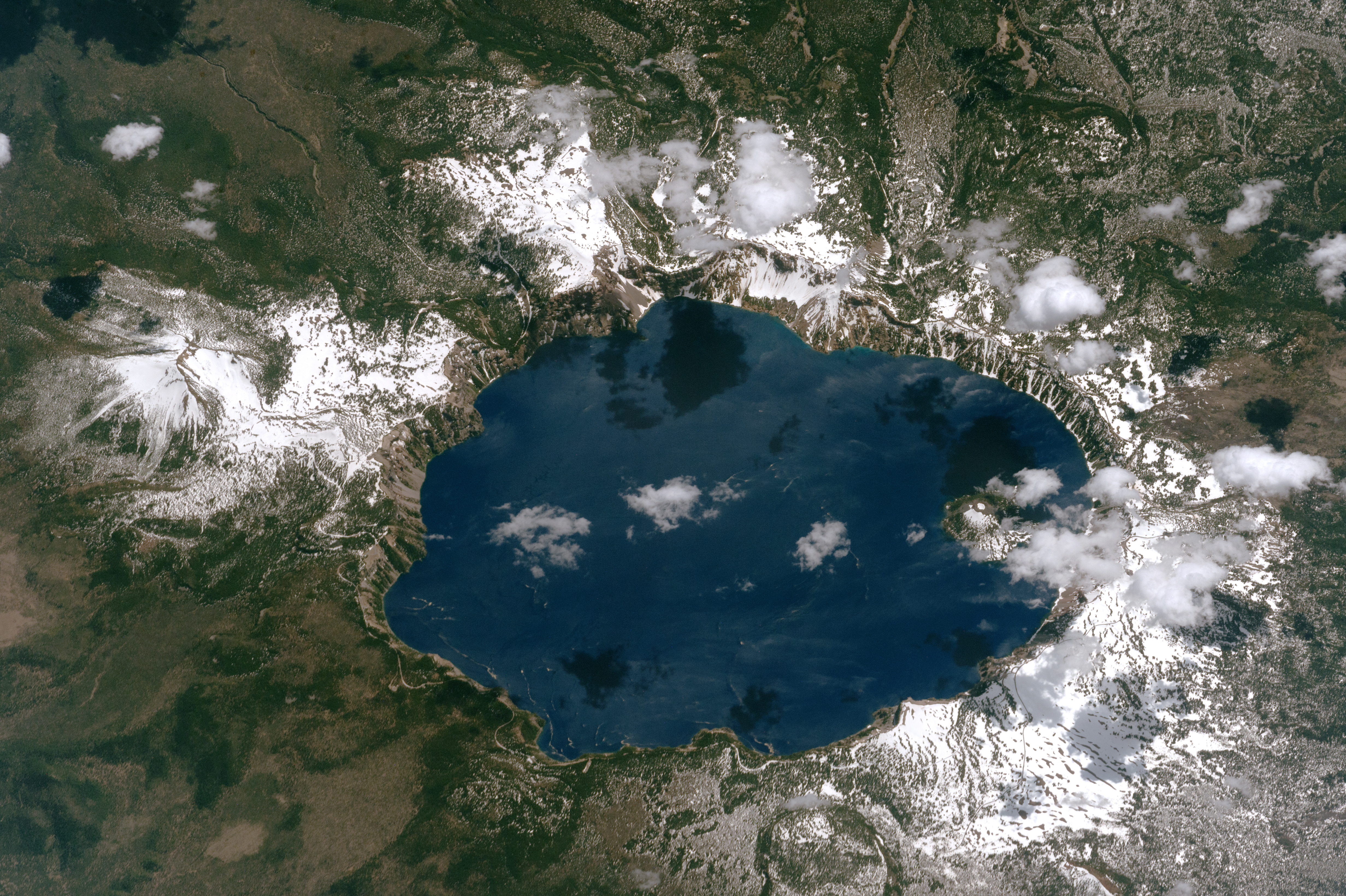Gorgeous Crater Lake Stuns in This Photo from Space

Southern Oregon's idyllic Crater Lake — snow ringed and shade dappled — belies its violent past.
This image, taken by an astronaut aboard the International Space Station, was released July 31 by NASA's Earth Observatory. Crater Lake's midnight-blue waters are mottled only by the shadows cast by clouds and Wizard Island (at right of the frame), stippled in snow.
The caldera — the volcanic bowl of the lake — was formed 7,700 years ago after the volcano Mount Mazama erupted, spewing pumice and ash skyward, reaching heights of up to 30 miles (50 kilometers). The excess of magma then caused the volcano to collapse. Rain and snow filled the caldera, outpacing the lava that continued to flow from further smaller eruptions, until the lake was formed, according to the United States Geological Survey. [The 10 Biggest Volcanic Eruptions in History]
The Wizard Island peak —which science teacher Tom McDonough observed in one of the Crater Lake Institute's Nature Notes From Crater Lake "somehow seems fitting to have a winged dinosaur fly in circles around the cone" —is one of the only remnants of the volcano's fiery past that can be seen above the surface. Further clues, however, remain along the lake floor. In 2000, scientists conducted a bathymetry survey, a study of the topography of the lake bottom, which revealed that the lake's depths contain a lava dome, cone and traces of a landslide.
Other crater lakes have similarly tumultuous histories. The supervolcano that formed the vast Indonesian Lake Toba 75,000 years ago spewed ash more than 4,350 miles (7,000 km), about the distance between Chicago and Hawaii. More recently, the 1991 eruption of Mount Pinatubo in the Philippines not only unleashed a 100-mile-wide (160 km) cloud of ash, but also created hot ash avalanches and enormous mudflows. This powerful eruption created the caldera that now contains serene Lake Pinatubo.
Original article on Live Science.
Sign up for the Live Science daily newsletter now
Get the world’s most fascinating discoveries delivered straight to your inbox.










